#wife of duke william of mecklenburg-schwerin
Explore tagged Tumblr posts
Text
Women of Imperial Russia: Ages at First Marriage
I have only included women whose birth dates and dates of marriage are known within at least 1-2 years, therefore, this is not a comprehensive list. This data set ends with the Revolution of 1917.
Eudoxia Lopukhina, wife of Peter I; age 20 when she married Peter in 1689 CE
Catherine I of Russia, wife of Peter I; age 18 when she married Johan Cruse in 1702 CE
Anna of Russia, daughter of Ivan V; age 17 when she married Frederick William Duke of Courland and Semigallia in 1710 CE
Anna Petrovna, daughter of Peter I; age 17 when she married Charles Frederick I, Duke of Holstein-Gottorp, in 1725 CE
Catherine II, wife of Peter III; age 16 when she married Peter in 1745 CE
Natalia Alexeievna, wife of Paul I; age 17 when she married Paul in 1773 CE
Maria Feodorovna, wife of Paul I; age 17 when she married Paul in 1776 CE
Elizabeth Alexeivna, wife of Alexander I; age 14 when she married Alexander in 1793 CE
Anna Feodorovna, wife of Konstantin Pavlovich; age 15 when she married Konstantin in 1796 CE
Alexandra Pavlovna, daughter of Paul I; age 16 when she married Archduke Joseph of Austria in 1799 CE
Elena Pavlovna, daughter of Paul I; age 15 when she married Frederick Louis, Duke of Mecklenburg-Schwerin in 1799 CE
Maria Pavlovna, daughter of Paul I; age 18 when she married Charles Frederick, Grand Duke of Saxe-Weimar-Eisenach in 1804 CE
Catherine Pavlovna, daughter of Paul I; age 21 when she married Duke George of Oldenburg in 1809 CE
Anna Pavlovna, daughter of Paul I; age 21 when she married William II of the Netherlands in 1816 CE
Alexandra Feodorovna, wife of Nicholas I; age 19 when she married Nicholas in 1817 CE
Joanna Grudzinska, wife of Konstantin Pavlovich; age 29 when she married Konstantin in 1820 CE
Elena Pavlovna, wife of Mikhail Pavlovich; age 17 when she married Mikhail in 1824 CE
Maria Nikolaevna, daughter of Nicholas I; age 20 when she married Maximilian de Beauharnais, Duke of Leuchtenberg, in 1839 CE
Maria Alexandrovna, wife of Alexander II; age 17 when she married Alexander in 1841 CE
Elizaveta Mikhailovna, daughter of Mikhail Pavlovich; age 17 when she married Adolphe, Grand Duke of Luxembourg, in 1844 CE
Alexandra Nikolaevna, daughter of Nicholas I; age 19 when she married Prince Frederick-William of Hesse-Kassel, in 1844 CE
Olga Nikolaevna, daughter of Nicholas I; age 24 when she married Charles I of Wurttemberg, in 1846 CE
Alexandra Iosifovna, wife of Konstantin Nikolaevich; age 18 when she married Konstantin in 1848 CE
Catherine Mikhailovna, daughter of Mikhail Pavlovich; age 24 when she married Duke Georg August of Mecklenburg-Strelitz, in 1851 CE
Alexandra Petrovna, wife of Nicholas Nikolaevich the Elder; age 18 when she married Nicholas in 1856 CE
Olga Feodorovna, wife of Michael Nikolaevich; age 18 when she married Michael in 1857 CE
Maria Feodorovna, wife of Alexander III; age 19 when she married Alexander III in 1866 CE
Olga Konstantinovna, daughter of Konstantin Nikolaevich; age 16 when she married George I of Greece in 1867 CE
Vera Konstantinovna, daughter of Konstantin Nikolaevich; age 20 when she married Duke Eugen of Wurttemberg in 1874 CE
Maria Pavlovna, wife of Vladimir Alexandrovich; age 20 when she married Vladimir in 1874 CE
Maria Alexandrovna, daughter of Alexander II; age 19 when she married Alfred, Duke of Edinburgh, in 1874 CE
Anastasia Mikhailovna, daughter of Michael Nikolaevich; age 19 when she married Friedrich Franz III, Duke of Mecklenburg-Schwerin in 1879 CE
Nadezhada Alexandrovna Dreyer, wife of Nicholas Konstantinovich; age 21 when she married Nicholas in 1882 CE
Elizabeth Feodorovna, wife of Sergei Alexandrovich; age 20 when she married Sergei in 1884 CE
Olga Valerianovna Paley, wife of Paul Alexandrovich; age 19 when she married Erich von Pistolhkors in 1884 CE
Elizabeth Mavrikievna, wife of Konstantin Konstantinovich; age 19 when she married Konstantin in 1885 CE
Anastasia of Montenegro, wife of Nicholas Nikolaevich the Younger; age 21 when she married George Maximilianovich, Duke of Leuchtenberg in 1889 CE
Milica of Montenegro, wife of Peter Nikolaevich; age 23 when she married Peter in 1889 CE
Alexandra of Greece and Denmark, wife of Paul Alexandrovich; age 19 when she married Paul in 1889 CE
Sophie Nikolaievna, wife of Michael Mikhailovich; age 23 when she married Michael in 1891 CE
Victoria Feodorovna, wife of Kirill Vladimirovich; age 18 when she married Ernest Louis, Grand Duke of Hesse, in 1894 CE
Xenia Alexandrovna, wife of Alexander Mikhailovich; age 19 when she married Alexander in 1894 CE
Alexandra Feodorovna, wife of Nicholas II; age 22 when she married Nicholas in 1894 CE
Olga Alexandrovna, daughter of Alexander II; age 18 when she married Count George-Nicholas von Merenberg in 1985 CE
Maria of Greece and Denmark, wife of George Mikhailovich; age 24 when she married George in 1900 CE
Alexandra von Zarnekau, wife of George Alexandrovich; age 16 when she married George in 1900 CE
Catherine Alexandrovna, daughter of Alexander II; age 23 when she married Alexander Baryatinksy in 1901 CE
Olga Alexandrovna, daughter of Alexander III; age 19 when she married Duke Peter Alexandrovich of Oldenburg
Elena Vladimirovna, daughter of Vladimir Alexandrovich; age 20 when she married Prince Nicholas of Greece and Denmark in 1902 CE
Natalia Brasova, wife of Michael Alexandrovich; age 22 when she married Sergei Mamontov in 1902 CE
Elisabetta di Sasso Ruffo, wife of Andrei Alexandrovich; age 31 when she married Alexander Alexandrovitch Frederici in 1907 CE
Maria Pavlovna, daughter of Paul Alexandrovich; age 18 when she married Prince Wilhelm of Sweden in 1908 CE
Helen of Serbia, wife of Ioann Konstantinovich; age 27 when she married Ioann in 1911 CE
Tatiana Konstantinovna, daughter of Konstantin Konstantinovich; age 21 when she married Konstantine Bagration of Mukhrani, in 1911 CE
Irina Alexandrovna, daughter of Alexander Mikhailovich; age 19 when she married Felix Felixovich Yusupov in 1914 CE
Nadejda Mikhailovna, daughter of Michael Mikhailovna; age 20 when she married George Mountbatten in 1916 CE
Antonina Rafailovna Nesterovkaya, wife of Gabriel Konstantinovich; age 27 when she married Gabriel in 1917 CE
Nadejda Petrovna, wife of Nicholas Orlov; age 19 when she married Nicholas in 1917 CE
Anastasia Mikhailovna, daughter of Michael Mikhailovna; age 25 when she married Sir Harold Wernher in 1917 CE
59 women; average age at first marriage was 20 years old. The oldest bride was 31 at her first marriage; the youngest was 14.
18 notes
·
View notes
Text

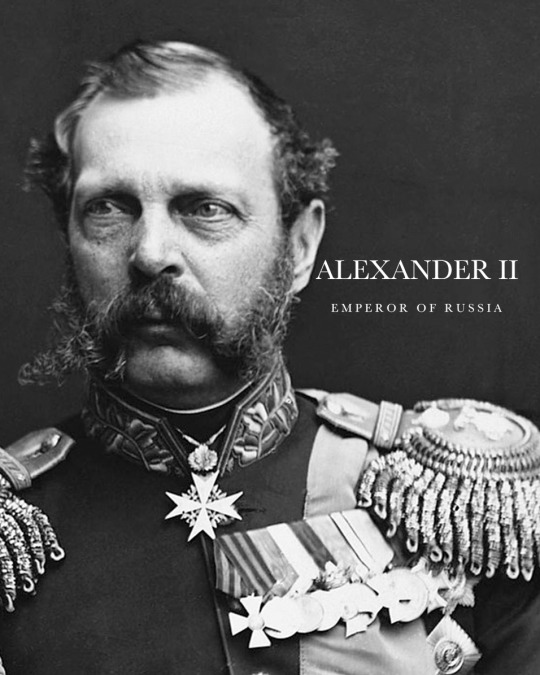
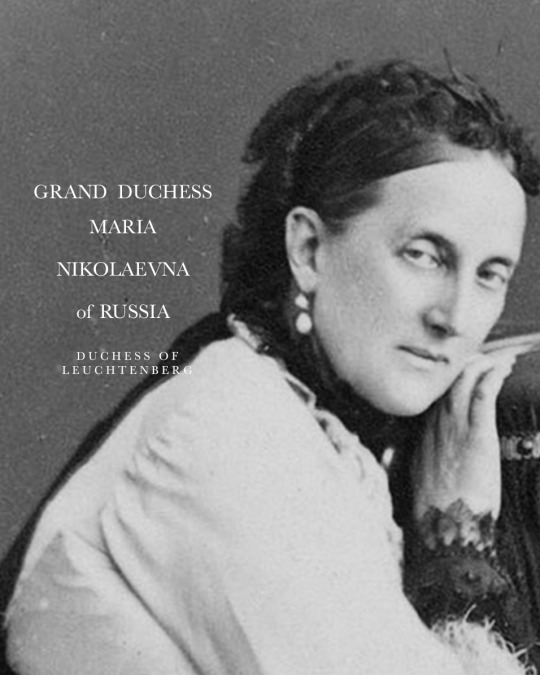
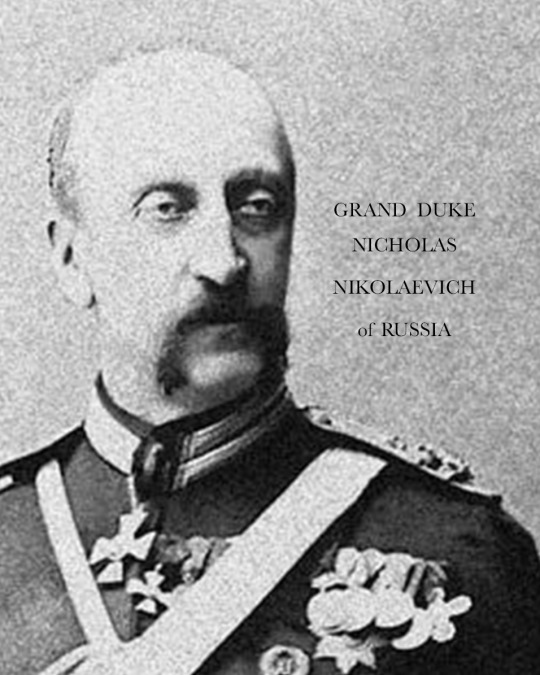

GODPARENTS OF GRAND DUKE ALEXEI MIKHAILOVICH
Grand Duke Alexei Mikhailovich was born on 28 December 1875 in Tbilisi, Tbilisi Governate, Russian Empire (now Georgia). He was the the sixth son and youngest child of Grand Duke Michael Nikolaevich of Russia, himself the youngest son of Emperor Nicholas I. He was the only Grand Duke to bear the name and patronymic of a Tsar: Alexei Mikhailovich. On 11 January (New Style) 1876, he was christened at Tbilisi by the Palace Priest and Confessor of Their Imperial Highnesses. He had seven godparents, as listed:
ALEXANDER II, EMPEROR OF RUSSIA - his uncle, the Russian Emperor stood as one of the godparents. He became the Emperor of All Russia in 1855. Alexander’s most significant reform as emperor was the emancipation of Russia’s serfs in 1861, for which he is known as Alexander the Liberator.
GRAND DUCHESS MARIA PAVLOVNA OF RUSSIA, GRAND DUCHESS CONSORT OF SAXE-WEIMAR-EISENACH - his aunt was one of his godparents. One of the daughters of Emperor Paul I, the grand duchess married a German prince Karl Friedrich, Grand Duke of Saxe-Weimar-Eisenach in 1804. She was an intellect, interested in both arts and sciences. German poet and novelist Johann Wolfgang von Goethe hailed her as one of the worthiest women of his time. She was the great-grandmother of Wilhelm II, German Emperor and Queen Victoria of Sweden.
GRAND DUKE NICHOLAS MIKHAILOVICH OF RUSSIA - his uncle, was one of his godparents. Trained for the military, as a Field Marshal he commanded the Russian army of the Danube in the Russo-Turkish War, 1877–1878.
GRAND DUCHESS MARIA PAVLOVNA OF RUSSIA - known as 'Maria Pavlovna the Elder', was the wife of his first cousin Grand Duke Vladimir Alexandrovich, and stood as one of his godparents. Born as Duchess Marie of Mecklenburg-Schwerin, her ancestors included Emperor Paul I of Russia. Upon her marriage to the grand duke, she became a prominent hostess in Saint Petersburg.
GRAND DUKE ALEXEI ALEXANDROVICH OF RUSSIA - his first cousin and namesake, one of the sons of Emperor Alexander II, was one of his godparents. Chosen for a naval career, Alexei Alexandrovich started his military training at an early age. By the age of 20 he had been appointed lieutenant of the Imperial Russian Navy, eventually becoming general-admiral.
GRAND DUCHESS ANASTASIA MIKHAILOVNA OF RUSSIA, GRAND DUCHESS OF MECKLENBURG-SCHWERIN - his sister, was one of his godparents. In 1879, when Alexei Mikhailovich was only four years-old, his only sister married a German prince, Friedrich Franz III of Mecklenburg-Schwerin (the elder brother of Grand Duchess Maria Pavlovna the Elder). Their children included Queen Alexandrine of Denmark and Crown Princess Cecile of Prussia. She was a strong-willed, independent and unconventional woman. She never became used to her new country where she was unpopular.
GRAND DUKE MICHAEL MIKHAILOVICH OF RUSSIA - one of his older brothers stood as another of his godparents. As Romanov tradition demanded, he followed a military career. He served in the Russo-Turkish War in 1877, became a Colonel and was adjutant at the Imperial court. In 1891 he contracted a morganatic marriage with Countess Sophie von Merenberg, a morganatic daughter of Prince Nicholas William of Nassau and a granddaughter of the Russian poet Alexander Pushkin. For contracting this marriage without permission, their first cousin Emperor Alexander III stripped him of his military titles and banished the couple from the Russian Empire. Alexei Mikhailovich never saw his brother again after his banishment.
Source
#alexei mikhailovich#romanovs#history#alexander ii#maria pavlovna the younger#maria nikolaevna#nicholas nikolaevich#alexei alexandrovich#anastasia mikhailovna#michael mikhailovich#godparents
25 notes
·
View notes
Text
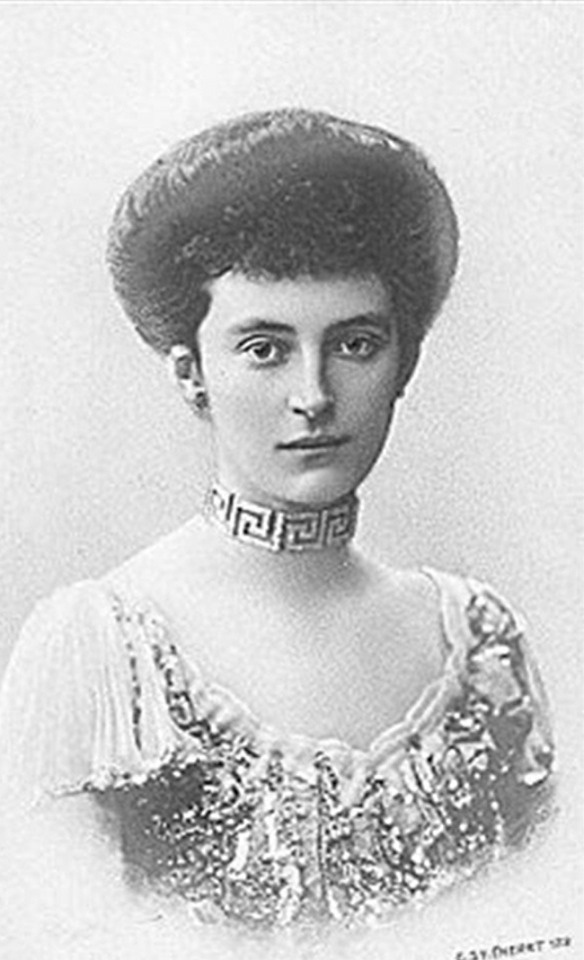

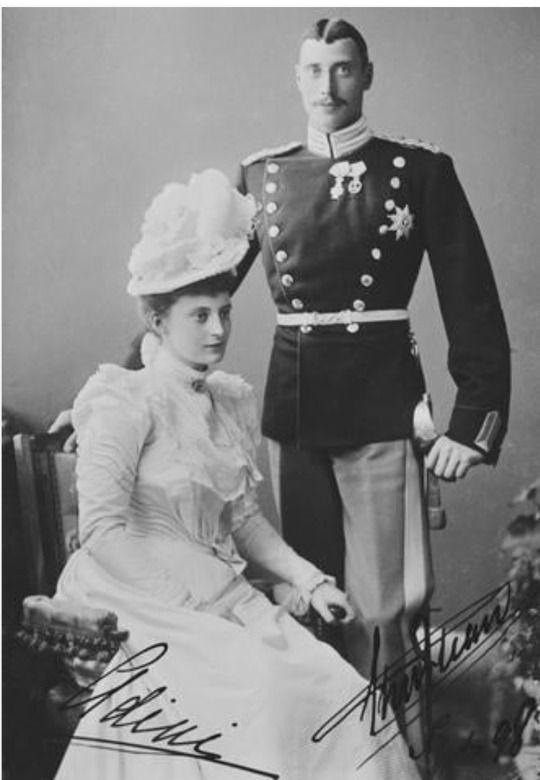
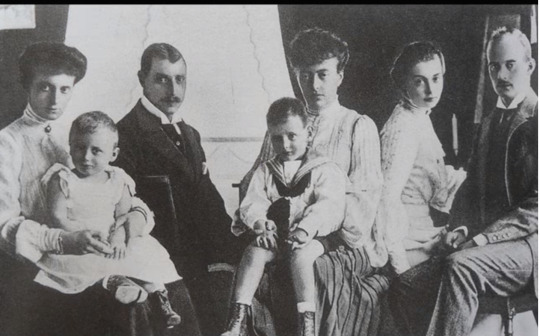
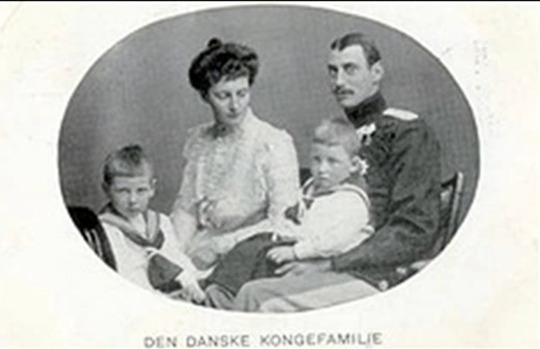

Photographs: 1 and 2: Alexandrine of Mecklenburg-Schwerin; 3. Alexandrine and Christian X; 4: From left to right, Alexandrine with her son Frederick on her lap, Christian X, Alexandrine's mother Grand Duchess Anastasia Mikhailovna (Grand Duchess Anastasia of Mecklenburg-Schwerin), Princess Alexandra of Hanover (wife of Alexandrine's brother, sitting next to her: Frederick Francis IV of Mecklenburg-Schwerin; 5: The Danish Royal Family: Queen Alexandrine, King Christian X and their 2 children: Prince Frederick and Prince Knud; 6. From left to right: Prince Knud, Queen Alexandrine of Denmark, Cecilie, Crown Princess of Germany, Christian X with his son Frederick standing in front of him, Princess Alexandra of Hanover and Grand Duke Frederick Francis IV of Mecklenburg-Schwerin
Alexandrine of Mecklenburg-Schwerin (1879 – 1952) was the elder child and first daughter of Frederick Francis III, Grand Duke of Mecklenburg-Schwerin and of Grand Duchess Anastasia Mikhailovna of Russia, a grandchild of Nicholas I (and hence the Romanov connection, which will appear at other junctions). Alexandrine was Queen of Denmark from 1912 to 1947 and Queen of Iceland from 1918 to 1944 as the spouse of King Christian X.
Alexandrine younger siblings were: Her only brother, Duke Frederick Francis, who in 1897 succeeded their father as Fredrick Francis IV, Grand Duke of Mecklenburg-Schwerin, and her only sister Duchess Cecilie, who married the German Crown Prince Wilhelm of Prussia, eldest son of German Emperor William II (but never got to reign.) So both Alexandrine and Cecilie's ancestry was mostly German but being great-granddaughters of Nicholas I (through their mother), there were certainly Romanovs (we all know that by the twentieth century the Romanovs were mostly of German descent.) Queen Alexandrine and King Christian X had two children, Prince Frederik (IX) and Prince Knud (later hereditary prince).
Queen Alexandrine played the piano to an almost professional standard. She was of a shy disposition and had difficulty getting used to public attention during her first years as queen. She preferred to avoid the media limelight but performed her functions in an exemplary manner. In the home, she was responsible for her two boys' education. Queen Alexandrine undertook extensive charity work until her death and was an avid golf player and photographer who also produced needlework to a high standard.
#russian history#imperial russia#romanov family#german royal family#duchess cecilie of mecklenburg schwerin#duchess alexandrine of mecklenburg schewerin#Cecilie#Queen Alexandrine of Denmark#King Christian X of Denmark#Frederick Francis III#Grand Duchess Anastasia Mikhailovna#Grand Duchess Anastasia of Mecklenburg-Schwerin
10 notes
·
View notes
Photo

Alexandrine of Prussia, Duchess William of Mecklenburg-Schwerin (1 February 1842 - 26 March 1906)
#alexandrine of prussia#friederike wilhelmina luise elisabeth alexandrine#duchess william of mecklenburg-schwerin#daughter of prince albert of prussia#wife of duke william of mecklenburg-schwerin#history#women in history#19th century#20th century#vintage#antique
5 notes
·
View notes
Text

Duchess Charlotte of Mecklenburg-Schwerin (1868-1944), 1880s.
Charlotte was the only child of William, Duke of Mecklenburg-Schwerin, and his wife Princess Alexandrine of Prussia.
She was named after her maternal aunt Charlotte, Hereditary Princess of Saxe-Meiningen ( mother of Bernhard III, Duke of Saxe-Meiningen who was Kaiser Wilhelm's brother-in-law).
17 notes
·
View notes
Photo

✧ ━━ the courts of switzerland present Matthias of Burgundy, Landgrave of Leuchtenberg. the 29 year old had been charming and decisive before the break of war but have now become possessive and impulsive. HE is often remembered by their likeness to Max Irons and light curls were slicked back, illuminating the cerulean blue of his eyes, devouring everything in his father’s court that he believed should be his as the gold rings decorated his hands a symbol of his own importance. the rumor mills of europe claim that his allegiance lies with Germany and he is for WAR.
FULL NAME - Matthias burgundy landgrave of Lichtenberg
MEANING ;
Matthias- In Biblical Names the meaning of the name Matthias is: The gift of the Lord.
MONIKERS / NICKNAMES ;
Matt- usually by his brothers and sisters
Matty - this nickname irritates him and is often used by people, mostly, family, to irk him.
TITLE - landgrave of leuchtenberg
GENDER & PRONOUNS - cis male, he/him
ETHNICITY - White
DATE OF BIRTH & AGE - October 14th, 1532. , 29 years old.
ZODIAC SIGN - Libra
ORIENTATION - heterosexual
MARITAL STATUS - Married to Johanna, landgrave of Lichtenberg
OCCUPATION - landgrave of Lichtenberg, the German kings bastard
CURRENT LOCATION - sasso corbaro castle, germany
BACKGROUND
PLACE OF BIRTH - sasso corbaro castle, germany
RESIDENCES - sasso corbaro castle, germany
RELIGIOUS VIEWS - Born and raised a Catholic, but a convert in order to assure Maximilian of his loyalty.
EDUCATION - Highly educated, Matthias may not be legitimate but he has all the perks of a prince in terms of education. He was mostly taught history, language and literature but has focused on politics and diplomacy with little to do with the arts.
LANGUAGES SPOKEN - German ( native ), Latin, French and English (fluent) and a little bit of Russian.
Born from one of Maximilian’s many rendezvous, this time with one of the daughters of the Duke of Burgundy, Matthias is keen to insert himself into the German court ─ and if he was to have his way, on the most important position, upon the throne. Despite his illegitimacy, he believes himself a better choice, one that would not ruin the country like his brother, or have it stick through his father’s backwards views. Born and raised a Catholic, but a convert in order to assure Maximilian of his loyalty, he aspires to chain his ambition to his ties to the Holy Roman Empire, for, in his opinion, that is the surest way back to righteous glory.
ALLEGIANCES ;
Schleswig-Holstein
Germany
Holy Roman Empire.
FAMILY ;
King Maximilian II - father
Daughter of the Duke of Burgandy - mother (unknown)
Duchess Agneta of Sweden - former stepmother (deceased)
Queen Elisabeth of Austria - stepmother
Duchess Eleonora Maria of Mecklenburg-Schwerin - legitimate younger half-sister
Duchess Friederike Anna of Mecklenburg-Strelitz -legitimate younger half-sister
Crown Prince Leopold - legitimate younger half brother
Matthias of Burgundy, Landgrave of Leuchtenberg - legitimate younger half-sister
Johanna, Landgravine of Leuchtenberg - Wife
Ferdinand of Lorraine - younger bastard half brother
APPEARANCE
FACECLAIM - Max Irons
HAIR COLOUR / STYLE - fair, almost golden that shines in the light. It has slight curls that he slicks back for formal occasions such as weddings, coronations etc
EYE COLOUR / SHAPE - green
HEIGHT - 6 feet 2 inches
BUILD - athletic, slight muscular.
SPEECH STYLE - Usually he is found whispering in whatever ear he can or listening to the secrets of his father’s court to use for his own advantage. When he wants to be heard, he will with a smooth and alluring voice that can be almost musical.
RECOGNIZABLE MARKINGS - Matthias has faint scars over various parts of his body from training and battles. His worst one is one on his chest that he is self-conscious about.
BEAUTY HABITS - Daily/nightly baths, brushing his hair
PERSONALITY
TROPES - - Imposter/Pretender — They are intelligent and take advantage of situations and characters - Observer — They often witness all that goes on, but remain quiet and calm throughout
INSPIRATIONS ;
HISTORICAL - Prince John of England (John Lackland) and William Marshall.
ENNEAGRAM - type 8, the challenger
ALIGNMENT - Chaotic Neutral
TEMPERAMENT - choleric
HOGWARTS HOUSE - Slytherin
POSITIVE TRAITS - charming, intelligent, intuitive, strategic, perceptive, decisive, witty
NEGATIVE TRAITS - jealous, spiteful, bitter, resentful, secretive, guarded, pessimistic
HABITS - bites his nails when stressed
HOBBIES - horse riding, reading, swordplay, archery, playing cards
USUAL DEMEANOR - Calm and composed though it usually hides his searing rage
HEALTH
PHYSICAL AILMENTS - N/A
NEUROLOGICAL CONDITION - N/A
PHOBIAS ;
Aquaphobia, on the other hand, is a social phobia that is defined as the persistent, unwarranted and irrational fear of water
ALLERGIES - none
SLEEPING HABITS - Matthias is a light sleeper and can usually last on four to five hours a night
SOCIABILITY - He has to be social as his lands and influence depend on it
ADDICTIONS - none
5 notes
·
View notes
Note
Were there any queens/princess/ladies particularly known for their great height? I know Mary Queen of Scots was about 6ft along with her mother and some of her Stuart female descendants were around that height too, but I don't know much about other royal families.
Huh, good question. Obviously these are just a few examples.
Mary Queen of Scots, whom you mentioned, is the most obvious example of a tall royal woman. At her wedding to the Dauphin of France in 1558, Mary, who was not quite fifteen at the time, was noted to stand shoulder to shoulder with her uncles, the brothers of her mother Mary of Guise. It was certainly from Mary of Guise that her Scottish daughter inherited her famous height: the French-born second wife of James V of Scotland was nearly six feet tall herself, and had indeed attracted no less than Henry VIII as a suitor because of her robust physical appearance (though, when Henry said that he was “big in person and in want of a big wife”, Mary shrewdly replied that “I may be a big person, but my neck is small”). Mary Queen of Scots eventually stood around five feet eleven inches - tall for a woman even by modern standards - and it was said that when she fled to England in 1568, she was recognized by strangers by her height alone.
Mary II - the great-great granddaughter of Mary, Queen of Scots - inherited her predecessor’s height as well as her name. The elder daughter of James II and VII (he who began the claims of the Jacobite pretenders), Mary stood at around five foot eleven as well. Her height made for a dramatic contrast between herself and her husband, the eventual William III, who was just five foot six - average height for a man of his day, but unfortunately noticeably shorter than his wife. (This difference was masked in the display of their wax effigies after their death, with William’s placed on a small stool so that he would stand equal to his wife.)
Another tall royal was Duchess Cecile of Mecklenburg-Schwerin, a German princess who married Crown Prince Wilhelm of Prussia in 1905. When her brother, Grand Duke Frederick Francis IV, married Princess Alexandra of Hanover in 1904, Crown Prince Wilhelm attended on behalf of his father, Wilhelm II. Though the Crown Prince was no slouch in the heigh department. and was certainly taller than his father, Cecile stood at nearly six feet tall, and was just about equal in height with the Crown Prince. (They were the parents of that Prince Wilhelm who had been forbidden from marrying Dorothea von Salvati, though he did anyway.)
More distant in the past was Margaret of York, the youngest daughter of Richard, Duke of York and sister to Edward IV and Richard III of England. (This was the same Margaret, incidentally, who had backed the false pretender Lambert Simnel.) The Duchess of Burgundy stood at around six feet tall - perhaps unsurprising, genetically speaking, since her brother Edward was famed for being around 6'4", and indeed at her wedding a contemporary remarked that she resembled her brother in height. (Unfortunately, her husband, Charles, was below average height.)
Not European royals, but royals nonetheless, there were also several Hawaiian royal women noted for above-average height. Queen Kamāmalu, the daughter of Kamehameha I and wife of Kamehameha II, stood over six feet tall, and caused quite a sensation from her height when she and her spouse traveled to Great Britain for a state visit in 1824; her British escort wrote to a friend of his that “Her Majesty is a whacker [slang for a very tall individual] nearly six feet high”, while the Times reported that she was “certainly a fine full grown lady”. Princess Ruth Keʻelikōlani, another member of the Kamehameha dynasty, stood over six feet tall as well (if you ever visit the Big Island of Hawaii, you can visit Hulihe’e Palace; Princess Ruth inherited the palace after the untimely death of her son, and although she preferred living in a large hut on the palace grounds, there are a number of artifacts there that give a real sense of the princess’ size.)
There are also a number of royal women I know who were reported as “tall”, though I cannot find specific measurements of height.Sophia Dorothea of Wurttemberg, for example, who married the future Emperor Paul of Russia, was noted for her great height: Catherine the Great, said that she was “tall, shapely, intelligent, quick-witted, and not at all shy”, while a contemporary noted that she was “tall, fair, [and] inclined to embonpoint [a typical eighteenth century description for “healthy” stoutness on a woman]“, and indeed it may be that the famously tall Russian grand dukes took their height from her. Both of Peter the Great’s surviving daughters, Anna and Elizabeth, were described as tall (again unsurprising, given that Peter himself was over six and a half feet tall), and Elizabeth in particular grew fond of metamorfozy balls, in which the members of each sex dressed in the other’s clothing, knowing how well male military attire suited her tall frame.
#history#mary queen of scots#mary of guise#mary ii of england#margaret of york#cecile of mecklenburg schwerin#kamamalu#keelikolani#sophia dorothea of wurttemberg#elizabeth of russia
147 notes
·
View notes
Photo






Queen Wilhelmine of The Netherlands
Wilhelmina (Wilhelmina Helena Pauline Maria; 31 August 1880 – 28 November 1962) was Queen of the Kingdom of the Netherlands from 1890 until her abdication in 1948.
Wilhelmina was the only child of King William III and his second wife Emma of Waldeck and Pyrmont. She became heir presumptive to the Dutch throne, after her half brother and great uncle had died, when she was 4 years old. She became queen when her father died, when she was 10 years old. As she was still a minor, her mother served as regent until Wilhelmina became 18 years old. In 1901, she married Duke Henry of Mecklenburg-Schwerin with whom she had a daughter Juliana.
She reigned for nearly 58 years, longer than any other Dutch monarch. Her reign saw World War I and World War II, the economic crisis of 1933, and the decline of the Netherlands as a major colonial power. Outside the Netherlands she is primarily remembered for her role in World War II, in which she proved to be a great inspiration to the Dutch resistance
House of Orange-Nassau 2/?
#orange-nassau#queen wilhelmina#queen wilhelmine#mecklenburg#dutch royalty#indonesia#dutch royal family#monarchy#queen regnant#queen of orange
47 notes
·
View notes
Text
who: british line of succession
Succession to the British throne is determined by descent, gender, legitimacy, and religion. Under common law, the crown is inherited by an individual's children and by a childless individual's nearest collateral line. The Bill of Rights 1689 and the Act of Settlement 1701, both of them as amended in March 2015, restrict the succession to the legitimate Protestant descendants of Sophia of Hanover that are in "communion with the Church of England” (while marrying to Roman Catholics no longer disqualifies). Protestant descendants of those excluded for being Catholics are eligible to succeed.
The United Kingdom is one of the 16 Commonwealth realms. Each of those countries has the same person as monarch and the same order of succession. In 2011, the prime ministers of the realms agreed unanimously to adopt a common approach to amending the rules on the succession to their respective Crowns so that absolute primogeniture would apply for persons born after the date of the agreement, instead of male-preference primogeniture, and the ban on marriages to Roman Catholics would be lifted. The ban on Catholics themselves was retained to ensure that the monarch would be in communion with the Church of England. After the necessary legislation had been enacted in accordance with each realm's constitution, the changes took effect on 26 March 2015.
(source)
Current line of succession (as at 2015 and limited to the descendants of Elizabeth II)
HM Queen Elizabeth II (b. 1926) …..(1) HRH Charles, Prince of Wales (b. 1948) ……….(2) HRH Prince William, Duke of Cambridge (b. 1982) ……………(3) HRH Prince George of Cambridge (b. 2013) ……………(4) HRH Princess Charlotte of Cambridge (b. 2015) ……….(5) HRH Prince Henry of Wales (b. 1984) …..(6) HRH Prince Andrew, Duke of York (b. 1960) ……….(7) HRH Princess Beatrice of York (b. 1988) ……….(8) HRH Princess Eugenie of York (b. 1990) …..(9) HRH Prince Edward, Earl of Wessex (b. 1964) ……….(10) James, Viscount Severn (b. 2007) ……….(11) Lady Louise Windsor (b. 2003) …..(12) HRH Anne, Princess Royal (b. 1950) ……….(13) Peter Phillips (b. 1977) ……………(14) Savannah Phillips (b. 2010) ……………(15) Isla Phillips (b. 2012) ……….(16) Zara Tindall (b. 1981) ……………(17) Mia Tindall (b. 2014)
Note on members of the Royal House and Family of Mecklenburg:
The first King, Heinrich Ludwig I was a descendant of George II through his mother, and of George I through his father, with his mother having the superior claim. Heinrich Ludwig’s wife was also a descendant of George I but as a Roman Catholic, Karola was excluded from succession. Heinrich Ludwig lost his place in the line of succession following his marriage to a Roman Catholic. Heinrich Ludwig and Karola’s children were placed in the line of succession after their father as he had the superior claim.
The second King, Paul Friedrich II, married Duchess Thyra of Mecklenburg-Schwerin, a descendant of George III, with a more senior claim, therefore the children of Paul Friedrich and Thyra were placed in the line of succession after their mother.
The third King, Wilhelm Franz I, married Princess Eleonora of Leiningen, a descendant of Queen Victoria but as that descent is through the unapproved marriage of Princess Victoria Melita of Saxe-Coburg and Gotha to Grand Duke Kirill Vladimirovich of Russia, Eleonora cannot claim her place in the line of succession through that marriage. Instead, Eleonora is in the line of succession to the British throne as a descendant of Frederick, Prince of Wales. Wilhelm Franz has the more senior claim as descendant of George III and thus his children follow him in the line of succession.
The second son of Paul Friedrich II, Prince Albrecht Gustav, married Veronica Doncaster, who has no claim to the British throne and thus their children follow their father.
The eldest daughter of Paul Friedrich II, Princess Heinrike Franziska is unmarried and without issue.
The second daughter of Paul Friedrich II, Princess Elisabeth Mathilde, married Prince Rupprecht of Hohenlohe-Langenburg, a descendant of Queen Victoria and thus their children follow their father in the line of succession to the British throne. Princess Elisabeth Mathilde’s descendants have the most senior position of the Mecklenburgers in the British line of succession as they are descended from Queen Victoria’s second son, Alfred, Duke of Edinburgh and Saxe-Coburg and Gotha.
The third daughter of Paul Friedrich II, Princess Marie Anastasia, married Prince Heinrich of Hesse-Kassel, who had a more senior claim as a descendant of Queen Victoria through her eldest daughter, thereby the children of Marie Anastasia and Heinrich follow their father in the line of succession.
The fourth daughter of Paul Friedrich II, Princess Cecilie Auguste, married Hereditary Prince Michael of Schwarzburg, a descendant of George I of the United Kingdom. As Cecilie Auguste has a more senior claim as a descendant of George III, their children follow their mother in the line of succession.
Princess Marie Elisabeth, daughter of Heinrich Ludwig I, married Prince Gorm of Denmark, who also descended from George II but as Marie Elisabeth had the more senior claim, their children followed after her instead of him. Their grandchildren by their daughter, Feodora, are excluded from the British line of succession as they are Roman Catholic.
4 notes
·
View notes
Text
Wives and Daughters of Russian Tsars: Ages at First Marriage
I have only included women whose birth dates and dates of marriage are known within at least 1-2 years, therefore, this is not a comprehensive list. This data set ends with the daughters of Peter I; the start of Imperial Russia.
Anastasia Romanova, wife of Ivan IV; age 17 when she married Ivan in 1547 CE
Maria Temryukovna, wife of Ivan IV; age 16 when she married Ivan in 1561 CE
Maria Skuratova-Belskaya, wife of Boris Godunov; age 18 when she married Boris in 1570 CE
Marfa Sobakina, wife of Ivan IV; age 19 when she married Ivan in 1571 CE
Anna Koltovskaya, wife of Ivan IV; age 20 when she married Ivan in 1572 CE
Maria Nagaya, wife of Ivan IV; age 28 when she married Ivan in 1581 CE
Irina Godunova, wife of Feodor I; age 23 when she married Feodor in 1580 CE
Yelena Sheremeteva, wife of Ivan Ivanovich; age 28 when she married Ivan in 1581 CE
Marina Mniszech, wife of False Dmitry I; age 17 when she married Dmitry in 1605 CE
Maria Dolgorukova, wife of Michael I; age 23 when she married Michael in 1624 CE
Eudoxia Streshneva, wife of Michael I; age 18 when she married Michael in 1626 CE
Maria Miloslavskaya, wife of Alexis; age 24 when she married Alexis in 1648 CE
Natalya Naryshkina, wife of Alexis I; age 20 when she married Alexis in 1651 CE
Agafya Grushetskaya, wife of Feodor III; age 17 when she married Feodor in 1680 CE
Marfa Apraksina, wife of Feodor III; age 18 when she married Feodor in 1682 CE
Praskovia Saltykova, wife of Ivan V; age 20 when she married Ivan in 1684 CE
Eudoxia Lopukhina, wife of Peter I; age 20 when she married Peter in 1689 CE
Catherine I of Russia, wife of Peter I; age 18 when she married Johan Cruse in 1702 CE
Anna of Russia, daughter of Ivan V; age 17 when she married Frederick William Duke of Courland and Semigallia in 1710 CE
Charlotte Christine of Brunswick-Wolfenbuttel; age 17 when she married Alexei Petrovich in 1711 CE
Catherine Ivanovna, daughter of Ivan V; age 25 when she married Karl Leopold, Duke of Mecklenburg-Schwerin, in 1716 CE
Anna Petrovna, daughter of Peter I; age 17 when she married Charles Frederick I, Duke of Holstein-Gottorp, in 1725 CE
The average age at first marriage was 18 years old.
3 notes
·
View notes
Photo

Alexandrine of Prussia, Grand Duchess of Mecklenburg-Schwerin (23 February 1803 - 21 April 1892)
#alexandrine of prussia#friederike wilhelmine alexandrine marie helene#grand duchess of mecklenburg-schwerin#daughter of frederick william iii of prussia#wife of paul frederick grand duke of mecklenburg-schwerin#history#women in history#19th century#art
2 notes
·
View notes
Text


𝐇𝐨𝐰 𝐰𝐞𝐫𝐞 𝐭𝐡𝐞 𝐑𝐨𝐦𝐚𝐧𝐨𝐯𝐬 𝐚𝐧𝐝 𝐭𝐡𝐞𝐢𝐫 𝐬𝐩𝐨𝐮𝐬𝐞𝐬 𝐫𝐞𝐥𝐚𝐭𝐞𝐝: 𝐆𝐫𝐚𝐧𝐝 𝐃𝐮𝐤𝐞 𝐕𝐥𝐚𝐝𝐢𝐦𝐢𝐫 𝐀𝐥𝐞𝐱𝐚𝐧𝐝𝐫𝐨𝐯𝐢𝐜𝐡 & 𝐆𝐫𝐚𝐧𝐝 𝐃𝐮𝐜𝐡𝐞𝐬𝐬 𝐌𝐚𝐫𝐢𝐚 𝐏𝐚𝐯𝐥𝐨𝐯𝐧𝐚 𝐨𝐟 𝐑𝐮𝐬𝐬𝐢𝐚
While traveling through Germany with his family in June 1871, Grand Duke Vladimir Alexandrovich, Tsar Alexander II’s second surviving son, first met Duchess Marie of Mecklenburg-Schwerin. They were smitten with each other, but she was already engaged to a distant relative, Prince George of Schwarzburg. In order to marry the Grand Duke, Marie broke off her previous engagement, but she refused to yield to the necessary conversion to the Orthodox religion. This delayed the couple's engagement for almost two years. Finally, Tsar Alexander II consented to Marie's continued adherence to her Lutheran faith, allowing Vladimir to marry her without loss of his rights to the Russian throne. The engagement was announced in April 1874.
The wedding took place in August of that year at the Winter Palace. Marie adopted the patronymic Pavlovna upon her marriage and was known as Grand Duchess Maria Pavlovna of Russia. Only decades later, after Vladimir's death, she converted to the Russian Orthodox. Grand Duke Vladimir and his wife were both witty and ambitious. They enjoy entertaining and their residence in St. Petersburg became the heart of the Imperial capital social life. Well suited to each other, they had a long and happy marriage. Among their five children (four lived to adulthood), was Grand Duke Kirill Vladimirovich, who later became Head of the House of Romanov.
Vladimir and Maria were second cousins and second cousins once removed. Their common ancestors were King Frederick William III of Prussia and Emperor Paul I of Russia. As the great-great-granddaughter of Emperor Paul, Marie wished to emphasize her exalted ancestry with the patronymic "Pavlovna."
44 notes
·
View notes
Text

Duchess Charlotte of Mecklenburg-Schwerin (1868-1944) and her fiance Prince Heinrich XVII Reuss of Köstritz (1847-1911), c. 1886/1887.
Charlotte's parents were Duke William of Mecklenburg-Schwerin and his wife Princess Alexandrine of Prussia. Through her mother, she was a granddaughter of famous and rich Princess Marianne of the Netherlands.
Through her father Charlotte was a first cousin to Grand Duchess Maria Pavlovna " The Elder".
#duchess charlotte of mecklenburg-schwerin#Prince Heinrich XVII Reuss of Köstritz#mecklenburg-schwerin#reuss of köstritz#german royal#german royalty#1880s#late 1880s#engagedcouple#royal engagement#engagmentphotos#engagedtobemarried#engagement
22 notes
·
View notes